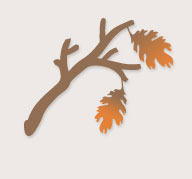
~ Lazarus Long
Prepared for EDTEC 541, Web-Based Multimedia Development, Summer 2006.  This artifact is an online museum for the Coast Guard Idlers.
This artifact is an online museum for the Coast Guard Idlers.
Communicate clearly to achieve professional goals using visual and verbal modes to explain and persuade.
This project was developed for the introductory web design course. I’d been meaning to redesign my online museum site for many years, so this was the perfect opportunity to combine business with pleasure. The Idlers are a vocal group that specializes in sea chanteys, with a fifty year history of performing around the globe. Their alumni include admirals, politicians, spies, and astronauts.
The Communication standard must achieve professional goals using visual and verbal modes to explain and persuade. The goal of The Idlers Online Museum is to serve the needs of the current and former members, and preserve their rich musical and cultural history. Quite a demanding challenge.
Form: As a former member and the group historian, I had access to a wide range of material. More importantly, I understood the intangible aspects of live performance, and the legacy of the group. The design is meant to make you feel as if you’ve just arrived at an exclusive club, been shown to your burgundy velvet-covered seat, and handed an ornate program printed on thick card stock. To recreate the intimate feel of a typical Idlers performance, I used muted tans and browns accented by maroon and grey. The fonts are slightly exotic but accessible. The darker outer border frames the material, with the progressively lighter background drawing your eyes to the main content area in the center. Each page is reminiscent of a program given out during live performances.
Function: Through conversations with several former members, I decided to concentrate on six main subject areas. The News section was important to former members, who wanted to keep up to date with the activities of the current group. The History section serves as the framework for our written narrative history, and the contents will eventually be transferred into a printed book. Music is the reason The Idlers exist, and a web site is the perfect way to showcase musical selections that include descriptions unavailable in either a recorded or live performance. Imagery, while of lesser significance to a vocal group, is nonetheless important as a way of illustrating the on-stage energy and off-stage antics of the members past and present. A dedicated Members section contains a roster, blog area, and personal contact information, all inside a password-protected directory. Finally, any web site needs an Administrative section, to list copyright, contact information, FAQ list, sitemap, credits, and vital links.
A major consideration in any of my web designs is the ability to access any piece of content within three (preferably two) mouse clicks. If you make your audience hunt and peck, you will lose them. This is especially true of The Idlers, most of which take the group’s name to heart in their daily activities: achieve maximum benefit with minimal effort.
I had originally hoped to construct the entire site based on a Cascading Style Sheet. Unfortunately, CSS was a new technology for me. Unfortunately again, the class was moved from an on-campus section to an online section. With no more than limited access to other experts, I realized my goal would be prohibitively difficult to achieve. My final design used a CSS for font and color information, but tables for content layout.
Another consideration was the ability to search for specific articles. I was sure none of my users would want to search the entire site for a mention of their name, and my testers confirmed this. I researched various search technologies and settled on one that returned basic results based on keywords. While not the most elegant implementation, the search feature worked well, and required minimal programming. Future versions of the Museum will expand upon the basic search capability.
This site is a clear demonstration of my ability to complete an audience and content analysis, then design an tailored online experience that communicates diverse information in an engaging manner. The design also allows for expansion, and shows my ability to anticipate future needs. Finally, this web site demonstrates my ability to build bridges between historical information and present learners using future technologies.
This project taught me the value of a good audience analysis. Our products as Educational Technologists do not exist in a vacuum, but for the benefit of our users and learners. Without first assessing their specific needs and desires, there is no way to know whether our products can be effective.
I also learned the importance of putting a good design framework in place prior to development. A good presentation framework is highly dependent on a good content analysis. After many hours building and testing the first few prototype pages, library elements, and a cascading style sheet, the rest of the site was rolled out very smoothly.
Finally, I experienced the thrill of connecting my users with obscure but interesting information. The article about the founding members brought a barrage of email and stories, many of which will be included in future articles within the site. Helping people access information in engaging ways is the promise of educational technology.